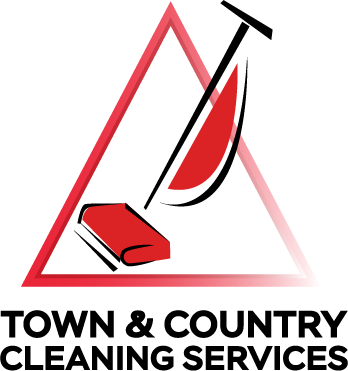The Scope of Cleaning Services
Do I Need Maintenance Cleaning or Restorative Cleaning?
The Cleaning Cycle (and your job’s place within that cycle) can be tricky to explain and the scope of cleaning services can be difficult to determine, so let’s play a game – one where you, say, own a cleaning company like ours. Part of the game involves reading between the lines when a prospective customer calls in saying “I need some cleaning”.
 There is such a gamut of possibilities with that opening line. Some callers just want a basement cleaned? – ok, why and what are we up against? Or they want an oven only – it’s going to be tough to find a ‘reasonable’ price for that one. The other end of the gamut incudes a ‘top to bottom deep clean’ of a 5000+ square foot home. So many questions and you have so little time to analyze. What expectations need to be met?
There is such a gamut of possibilities with that opening line. Some callers just want a basement cleaned? – ok, why and what are we up against? Or they want an oven only – it’s going to be tough to find a ‘reasonable’ price for that one. The other end of the gamut incudes a ‘top to bottom deep clean’ of a 5000+ square foot home. So many questions and you have so little time to analyze. What expectations need to be met?
Some people seem to think that the last project (the larger home) should take ‘a couple of people about two hours’ and I’ve heard that suggestion countless times– reality tells us it might very well be closer to 3 people for 2 full workdays—and that just might not fit their budget.
Scope of Work
 Ultimately, meeting peoples’ needs and budgets (important factor) brings the discussion down to condition and scope of work – that process is simply essential to help set expectations and keep them grounded in reality. There is no fairy Godmother to wave a wand and grant our wish for a clean house.
Ultimately, meeting peoples’ needs and budgets (important factor) brings the discussion down to condition and scope of work – that process is simply essential to help set expectations and keep them grounded in reality. There is no fairy Godmother to wave a wand and grant our wish for a clean house.
The existing condition has to be assessed – whether it’s an oven, basement or large house – what is the age, how long has been since its last in-depth clean? In other words, what will it take to get it back to – if not ‘like new’ condition (more on that later) but at least back to ‘ground zero’.  What will the object of our attentions look like after the removal of layers of: dust, soil, soap scum, mineral deposits, baked-on grease, etc. – whatever comprises the set of obstructions between the current condition and the base line goal of ‘clean’. Do you even have a working definition of ‘clean’ that both you and they can agree upon?
What will the object of our attentions look like after the removal of layers of: dust, soil, soap scum, mineral deposits, baked-on grease, etc. – whatever comprises the set of obstructions between the current condition and the base line goal of ‘clean’. Do you even have a working definition of ‘clean’ that both you and they can agree upon?
The Coin Collector Analogy
 When people sell valuable coins they tend to use a set of phrases that help indicate their condition: “mint’ or ‘like new’ normally means a desirable quality for a collector (and the same for a home buyer). A worn coin cannot be restored to mint condition no matter how much we wish it could (especially as seller). The seller often hopes their description of ‘like new’ will bring a great price. The buyer will assess it according to what they’re willing to pay but certainly no more than what they believe it is worth.
When people sell valuable coins they tend to use a set of phrases that help indicate their condition: “mint’ or ‘like new’ normally means a desirable quality for a collector (and the same for a home buyer). A worn coin cannot be restored to mint condition no matter how much we wish it could (especially as seller). The seller often hopes their description of ‘like new’ will bring a great price. The buyer will assess it according to what they’re willing to pay but certainly no more than what they believe it is worth.
When we clean a heavily worn or soiled item, room, carpet or house, we can only hope to make it look better. No matter what we do, cleaning alone will seldom make it ‘mint’ or ‘like new’ again. For an example, cleaning heavily soiled carpet can reveal stains or bleached-out areas that had been hidden by layers of dirt and possibly end up clean BUT – looking as bad as or even worse to the eye than before.
People may remember what the piece (room, house) looked like when new or the last time it was thoroughly cleaned (before degradation began) and may expect that same look even after months or years of neglect. Our guarantee of satisfaction simply cannot cover unrealistic expectations that lie outside the realm of reality.
The Dirt Scale
In the cleaning field, we refer to the dirt condition or dirt code. Many cleaners use a scale of 1 to 10 with ‘10’ indicating the worst condition the company is willing to undertake to clean (but not as filthy as can be imagined). The “dirt code” is a term coined by Debbie Sardone of “The Clean Team” and was the first cleaner that we know of to use ‘the Dirt Code’ phrase. (See Debbie’s Dirt Code Guide)

This is not meant to be a roll of the dice—it is intended to reduce the risk of failure and to help define the rules of the game. This step requires intelligence and realism, not blind chance and it can help both sides assess how close the starting square lies relative to the finish line.
We often ask the client to help assign their own dirt code using our 1 to 10 scale. Understandably, most clients tend to underestimate the amount of cleaning needed. A rating of 1 to 3 always makes us wonder why they need a professional cleaner in the first place. If they mention pets or other factors, we may adjust their rating upwards a bit.
Sometimes a condition between 7 to 10 may require multiple cleanings to finally loosen the layers of build-up. If the surfaces will tolerate it, they might require relatively strong acids (for mineral deposits) or alkalines (for grease) and in some cases either the source of the problem may have already caused such damage – or the attempt to ‘cure’ it with strong cleaners or methods (abrasives, e.g.) exacerbates the problem to the point that the item cannot be restored, certainly not by cleaning alone.
Then too, a bathroom may be a ‘10’ on our dirt code scale but what the customer really cares about is the kitchen which is at only a level ‘6’. Realistically – especially if this is for a realty or presentation clean — they both need to sparkle when we’re done, even if the customer doesn’t particularly value the condition of the bathroom.
The Cleaning Cycle
What is the Cleaning Cycle?
Based on my limited research, it appears that the concept of a cleaning cycle originated with the care of commercial vinyl tile (CVT). When you undertake a new janitorial contract that includes care of this type of flooring you have to analyze whether its inherited condition can be identified as being at a ‘maintenance, interim, or restorative level’. Why so complicated?
CVT Floor Finish Example: Restorative
Because at the restorative level you normally have to completely strip every inch of the flooring (which may require repeated passes with gallons of stripper depending on how many layers have been put down over the years), then you must apply multiple layers of finish (usually 4 to 5) allowing each layer to thoroughly dry before adding the next. This is messy, potentially toxic, labor-intensive, costly and it is demanding work.
CVT Floor Finish Example: Interim
If the existing floor has a worn but cleanable finish (one where the prior crews did not lay down new finish on top of old, dirty finish) you may be able to simply scrub (not strip) and add one or two new layers of finish. That step and the occasional spray and buff would qualify as ‘interim’ cleaning.
CVT Floor Finish Example: Maintenance
Finally, if the previous crew has been maintaining the floor well and has recently added a new layer of finish, you might be able to begin the contract while still at an easier ‘maintenance’ level (only dust vacuuming and mopping are needed) buying you months or even a year before the next interim clean. With proper care, you may never have to go through the restorative level at all. Then the true ‘restoration’ becomes necessary only when the floor ages out or loses integrity – and this type of ‘restoration’ is accomplished by replacing the material altogether.
Where Is My House In the Cleaning Cycle?
Evaluating the position in the ‘cleaning cycle’ when you undertake the cleaning of a house is a good bit more complex than evaluating the condition of one type of flooring. But – it is just as critical to evaluate the condition of the entire project’s focus, the make-up and condition of its multitude of surfaces, the elapsed time since the last deep clean, and so forth, so that you and the homeowner can be realistic about expectations, results and the scope of cleaning services that will be needed.
Protecting Your Investment In Your House
 The wisest home buyers base their choice upon many personal factors while bearing in mind the ease of resale and the protection of the equity in their house, condo, etc. That investment property should be well-maintained, not just with repairs and beneficial refurbishment but with maintenance cleaning and the occasional deep cleaning as needed.
The wisest home buyers base their choice upon many personal factors while bearing in mind the ease of resale and the protection of the equity in their house, condo, etc. That investment property should be well-maintained, not just with repairs and beneficial refurbishment but with maintenance cleaning and the occasional deep cleaning as needed.
How Do I Determine the Cleaning Cycle For Each Customer?
When it comes to house cleaning, our game scenario invites us to consider two extremes: we’ll call one a model, the other a ‘well-loved’ house.
- The Model. Located in a new development and having already received a full post-construction cleaning a model may only need a light dust and vacuum sequence, repeated in accordance with traffic or other need. The bathrooms are never used (except possibly the powder room) and the kitchen is never cooked in beyond perhaps the occasional microwaved lunch. The modest-sized model (not overly decorated) can be cleaned for just a little more than the price of a trip fee. This describes a true ‘maintenance’ cleaning situation and can probably be rated at a 1-3 on the dirt condition scale.
- The Well-Loved House. This house might have been occupied a fair number of years by a 4-5-person family with pets; perhaps they have been busy professionals with little or no time to clean and now the house has to be made market-ready. This is a ‘project clean’. In additional to general cleaning, it may need windows done inside and out (to enhance curb appeal) and the carpets often need to be professionally cleaned. The experienced seller or realty agent fully recognizes this but the homeowner often needs some persuasion. It is the responsibility of the professional(s) to help explain what the value is to the homeowner. You will want to de-clutter and clean prior to your market appraisal. (See the Institute for Service Excellence article, “Preparing A House For Cleaning“) A clean home tends to sell faster and at a price closer to the asking price (assuming the price is supported by the professional appraisal). While there may be additional considerations for repairs and possible redecoration, even investing up to a half percent of the selling price for necessary cleaning can pay off handsomely if the return includes a rapid sale at your asking price.
The Ongoing Residential Clean
 For regular residential cleaning and for realty cleaning, we always ask to walk the house so we can inform ourselves about the decorating style, types and ages of surfaces as well as the degree of overall household organization. All of these and other factors are key to in determining the scope of cleaning services needed so we can give an accurate estimate.
For regular residential cleaning and for realty cleaning, we always ask to walk the house so we can inform ourselves about the decorating style, types and ages of surfaces as well as the degree of overall household organization. All of these and other factors are key to in determining the scope of cleaning services needed so we can give an accurate estimate.
If we get the job, that pre-examination can provide important notes for the cleaning team about: pre-existing damage; the presence of natural stone, e.g.; precautions regarding pets; requests that fall outside of our normal scope; other special handling and items that require extra care or attention.
Seeing these items also prompts us to verbally inform the client of useful information. We can warn them against such common bad advice as using dishwashing liquid to wipe down their granite counters or mixing vinegar and water for cleaning their hardwoods.
Even when we include detailed notes in our written policies, it seems only a few people read them carefully enough to understand how we define our ‘normal’ scope. The walk-through allows us to identify and mention those things requiring special care or those which we avoid altogether. This gives the customer another opportunity to understand what is ‘normal’ as well as what is not included at least not without adding a modest fee.
Arriving at the Goal of Clean
Over our 24+ years of experience we have added systems to help improve both our onboarding of new customers and employees as well as the execution of various types of cleaning. Even so, ‘clean’ is in the eye of the beholder and can often be thought of subjectively as ‘the way my mother did it’ or ‘it needs to smell like lemon (or pine, orange, etc., etc.) before I can think my house is clean’.
Our task is to serve the client by cleaning as well as we can, as safely as we can and as efficiently as we can while following OSHA and other legal and labor regulations. (See House Cleaning Certification – Why Homeowners Should Care) Even considering all this, perhaps most important to the customer is that we perform as closely to our commonly-held definition of ‘clean’ as possible. It takes time and effort to do this well. Wishful thinking leads to the land of denial, not reality.
 Welcome to the game of cleaning—our world is based in that reality, not fantasy, but we at Town & Country Cleaning Services and many similar companies would love to fulfill the ‘fairy Godmother’ role for your house. For sure, one reality is: you can buy back some quality time for your family or career when you engage a professional house cleaner.
Welcome to the game of cleaning—our world is based in that reality, not fantasy, but we at Town & Country Cleaning Services and many similar companies would love to fulfill the ‘fairy Godmother’ role for your house. For sure, one reality is: you can buy back some quality time for your family or career when you engage a professional house cleaner.
